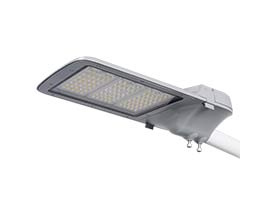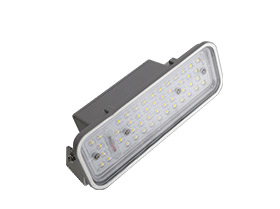Technical and Usage Standards for LED Road Lights
Technology is becoming increasingly mature, and the efficacy of light sources has reached over 100lm/W, which makes energy-saving transformation of urban road lighting possible. LED road lights, especially high-power LED road lights, are rapidly impacting the traditional road light market. As the name suggests, high-power LED road lights are road lights with power greater than 30 watts that use LED semiconductor light sources. The standard for LED road lights is generally the uniformity of road surface illuminance, which conforms to the road illumination.
LED road light technical standards
Light conversion rate is 17%. (The actual efficiency is 170W when each square solar power with a power of 1000W is utilized)
The main lens used in LED road lights has a rectangular light spot, and the material is PMMA optical material with a light transmittance of ≥93%, a temperature resistance of -38℃~+90℃, and a UV resistance/yellowing rate that does not change for 30,000 hours.
The average illuminance of the uniformity of road surface illuminance is 0.48, and the light spot ratio is 1:2.
Conforms to the road illumination. (The 1/2 center light spot reaches 25LUX, the 1/4 center light intensity reaches 15LUX, the light intensity of 16 meters away is 4LUX, and the overlapping light intensity is about 6LUX.)
It has great application prospects in new urban lighting. It can be dimmed deeply and does not change color and other characteristics due to dimming.
Humidity adaptability: ≤95.
Despite the rapid development of LED road lights, the standards for LED road lights are relatively lagging behind. LED road light standards also exist in the global scope, such as the European standard for LED road lights.
In fact, the standards for LED road lights vary in different regions. LED road lights must meet the requirements of the sales area in terms of standards. Therefore, bidding for LED road light projects requires in-depth research of the local LED road light standards, so as to gain a foothold in intense market competition.
LED road light use standards
This standard specifies the definition, product classification, model and naming, technical requirements, test methods, inspection rules, labeling, instructions, packaging, transportation, and storage requirements of LED (light-emitting diode) road lights for road, street, tunnel lighting, and other outdoor public place lighting with DC power supply below 250V or AC power supply below 1000V.
Electrical performance
When the LED road light is operating at the rated power supply voltage and frequency, the difference between the actual consumed power and the rated power should not exceed 10%, and the power factor should not be less than 0.92.
Protection level
LED road lights of Grade A should not be lower than IP67; Grade B should not be lower than IP66; and Grade C should not be lower than IP65.
Average life
The rated average life of LED road lights should not be less than 30,000 hours.
Rated temperature
The rated temperature Tc of LED road lights should not be greater than 58℃.
Thermal sink temperature
The thermal sink temperature of each LED tube inside the luminaire should not be higher than 65℃.
Main light parameters
Anti-interference performance
The surge suppression performance (anti-lightning) should not be lower than 2kV (line-to-line) and 4kV (line-to-ground).
Light distribution characteristics
When some LED bulbs in the lighting fixture are extinguished or the entire lamp is dimmed, the shape of the light spot and the uniformity of the road surface illuminance should not change significantly.
 English
English  العربية
العربية  中文
中文
 Deutsch
Deutsch
 Türkçe
Türkçe

 日本語
日本語


